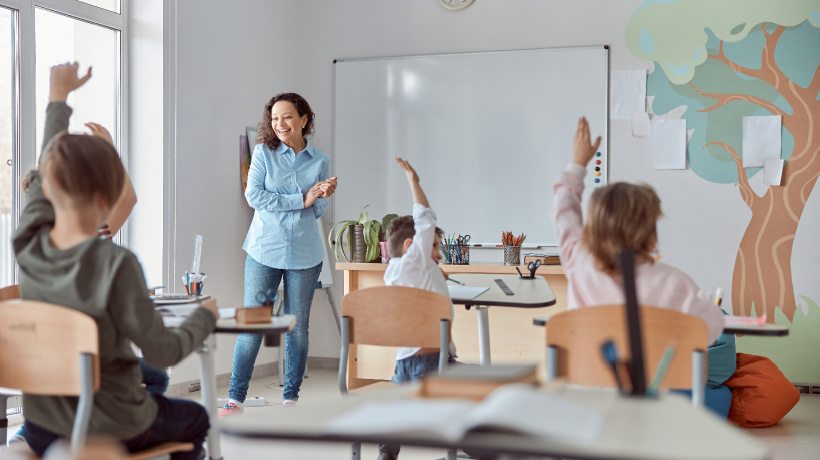Revisiting Learning Styles
Educational trends come and go, and widely adopted theories can change. Many people accepted learning styles but, lately, there's been a debate about them. This theory refers to approaching each person individually and adjusting the teaching methods according to their preferences and how they process, remember, and recall information. So, we have visual learners, auditory learners, kinesthetic learners, and those who like to read and write. But as our knowledge of how people learn increases and technology offers new learning opportunities, one begins to wonder if learning styles are still relevant. Let's discuss the pros and cons of learning styles and dive more into this debate.
The Pros Of Learning Styles
Individualized Learning
Recognizing that not everyone learns the same way was quite revolutionary. It offered the opportunity for educators to establish an individualized approach to learning, tailoring the process to every student's uniqueness. This way, a learner who could absorb information quickly through images or videos was presented with visual learning materials. Likewise, kinesthetic learners who understood concepts better with physical activities were encouraged to try experiments or interactive modules. This way, the classroom environment became more inclusive, allowing learners to thrive on their own terms.
Varied Teaching Methods
Since teachers couldn't help individual students while also catering to the whole class's needs, they might implement various teaching methods during lessons. This meant that learners would participate in activities, conduct experiments, watch videos and presentations, listen to audio lessons, and read from books so that everyone's preferences were met at once. Sometimes, they even gave different assignments for the same topic and compared the results to the class. For example, in physics class, kinesthetic learners conducted experiments, visual learners created posters, and those who preferred text wrote essays to explore the ideas.
Learning Style Assessments
Knowing how someone absorbs information not only allows educators to offer them the optimum learning experience but also assess their knowledge effectively. For instance, testing visual learners with traditional quizzes and exams that are text-based may not produce accurate results. People usually don't perform well when they're presented with uninteresting content, so teachers decided it was time for more personalized assessments. Interactive quizzes, game-like tests, hands-on practice, and pop-up questions in videos are some of the ways they incorporated learning styles into evaluations.
The Cons Of Learning Styles
Lack Of Scientific Foundation
One of the main points against learning styles seems to be neuromyths. These are mix-ups about how the brain works and learns. Many people have claimed that the theory of learning styles is rooted in neuroscience, suggesting that the different styles come from differences in brain structure. However, it's actually based on preferences versus biological makeup. This can lead to teachers over-focusing on this method and completely neglecting other effective teaching methods that are more scientifically proven.
Oversimplification
The way humans learn is a complex process, and learning styles tend to oversimplify it. They also stereotype students based on how they like to learn. Let's start by saying that the cognitive process differs from person to person and even between different contexts. By categorizing learners into visual, auditory, and so on, we ignore the fact that, in some topics, they might prefer another type of learning. Their preferences can change depending on their mood, too. If someone's feeling down, they might appreciate some quiet reading time more than overwhelming videos and interactive activities. Additionally, there's always the danger of assuming one's skills and capabilities and not addressing their learning needs.
Challenges For Teachers
Some educators may have found this method effective, but it doesn't come without challenges. First of all, we must consider the logistics. A class full of students with unique preferences that need to be addressed is ideal but not very practical. As mentioned above, not every learner is completely visual or kinesthetic. Some may prefer videos in math class but experiments in science class. Others would like game-like modules when learning history to make learning more approachable. Implementing learning styles is challenging if teachers must constantly juggle multiple methods for multiple subjects. Even if they could, time and resources are limited.
Strategies For Effective Teaching
Active Learning
If you've decided that learning styles aren't worth the hype, you can try other effective teaching methods, like active learning. It's based on the notion that learners understand best when they're involved in the subject. It puts them in the driver's seat instead of making them passive listeners. This involves students actively participating in class through discussions, problem-solving sessions, and interactive elements. You can establish group projects or case studies where learners collaborate with their peers, share their thoughts and opinions, and get hands-on experience. Active learning will increase their critical thinking skills and boost engagement.
Technology
Implementing technology in a classroom is a modern necessity. It allows every student to access learning material from anywhere, no matter their physical abilities or learning needs. They have a library of different resources, like articles, eBooks, digital textbooks, and videos, that can cater to every preference. Plus, this makes lessons more personalized since students can choose material that suits them, depending on the subject. Still, implementing technology needs careful planning.
Differentiated Instruction
This approach helps educators create a learning environment where everyone's background and differences are taken into consideration. But how does this work? In a language learning class, for example, the teacher would first assess everyone's level. Then, they would provide each student with relevant material. Those with advanced knowledge would receive more complex material; others would get smaller bits of information; some would be given audiobooks, and so on. Teachers can also apply this method to assessments by testing students' knowledge with essays, group projects, or quizzes, depending on their preferences.
Conclusion
The world of education should always be open to new ideas and welcome research to improve the learning experience for all students. By embracing ongoing research and adapting to changing needs, such as rethinking the learning styles perspective, you're able to create a stronger and more effective educational system that benefits everyone, no matter their background or learning needs. You can also check out our list of Instructional Design models and theories to dive deeper into ID methodologies.









